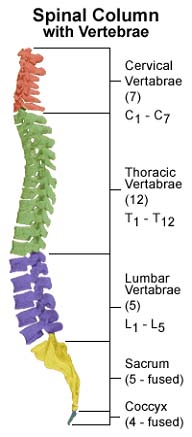Myelography is an imaging technique which involves the intrathecal instillation of contrast medium and shows its passage in the lumbar or cervical subarachnoid space around the spinal cord and nerve roots. Myelography uses a real-time form of X-ray called fluoroscopy. The contrast medium is a specially formulated water-soluble iodine-containing material.
CT myelography: CT scan is performed after myelography. Combining CT scan with myelography gives a better view of spinal cord and roots which appear as filling defect in the opaque subarachnoid space.
Low-dose CT myelography: The CT scan is performed with a relatively small amount of dilute contrast medium and thus has advantage of reducing radiation exposure as well as exposure to contrast media. This technique has largely replaced the conventional myelogram. Newer CT scan with multidetector scanners are being used now a days, which quickly reform the images equivalent to traditional myelography projections.
Myelography can be used to detect abnormalities of spinal cord, spinal canal and spinal nerve roots. Myelography can also diagnose the spinal stenosis and herniation of intervertebral disc into spinal canal.
Myelography has largely been replaced by CT myelogram and MRI scans for the diagnosis of spinal cord diseases. There are a few conditions for which conventional myelography is still used, such as suspected meningeal or arachnoid cyst.
A myelogram is also helpful in assessing the outcome of surgery in an individual patient and thus helps in planning surgery. Conventional myelography and CT myelography provide highly precise information before the surgeries like spinal fusion and spinal fixation.
Contraindications: Myelography is a quite safe technique but care should be taken in following conditions:
Complications: the most frequent complications are
Other resources:
Hopkins Medicine on myelograms
Use of myelograms in spinal cord birth injuries

